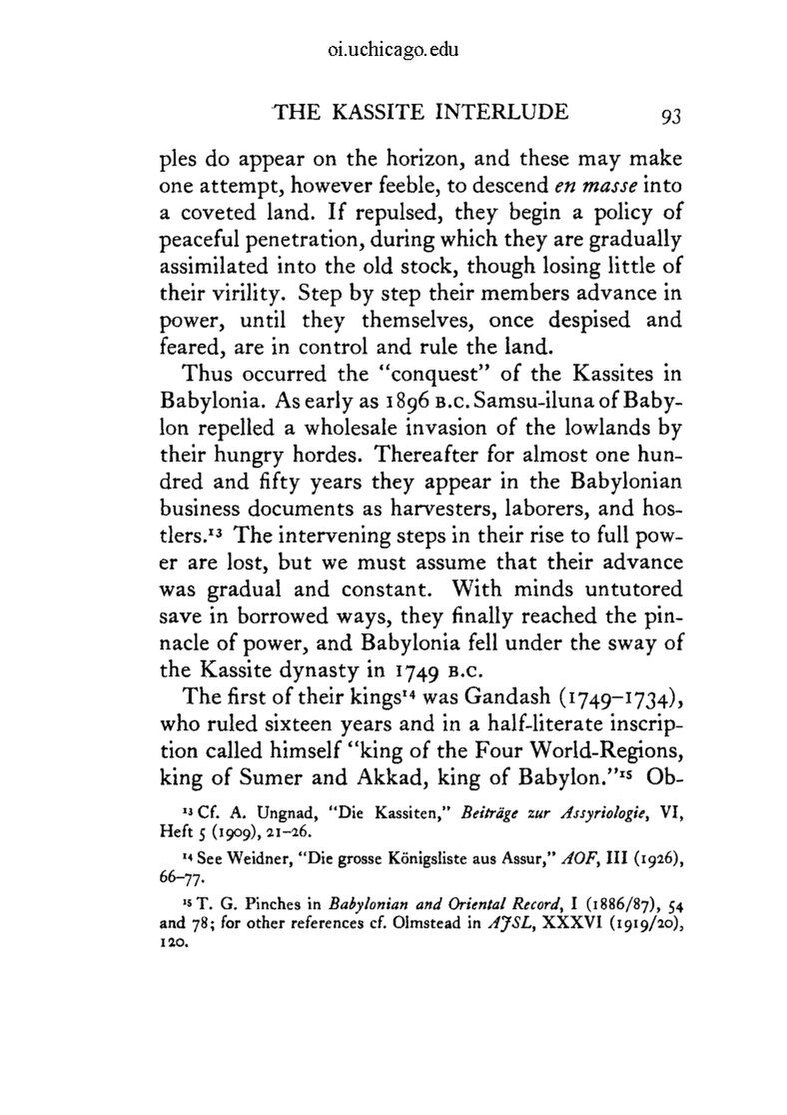ples do appear on the horizon, and these may make one attempt, however feeble, to descend en masse into a coveted land. If repulsed, they begin a policy of peaceful penetration, during which they are gradually assimilated into the old stock, though losing little of their virility. Step by step their members advance in power, until they themselves, once despised and feared, are in control and rule the land.
Thus occurred the "conquest" of the Kassites in Babylonia. As early as 1896 b.c. Samsu-iluna of Babylon repelled a wholesale invasion of the lowlands by their hungry hordes. Thereafter for almost one hundred and fifty years they appear in the Babylonian business documents as harvesters, laborers, and hostlers.[1] The intervening steps in their rise to full power are lost, but we must assume that their advance was gradual and constant. With minds untutored save in borrowed ways, they finally reached the pinnacle of power, and Babylonia fell under the sway of the Kassite dynasty in 1749 b.c.
The first of their kings[2] was Gandash (1749–1734), who ruled sixteen years and in a half-literate inscription called himself "king of the Four World-Regions, king of Sumer and Akkad, king of Babylon."[3] Ob-
- ↑ Cf. A. Ungnad, "Die Kassiten," Beiträge zur Assyriologie, VI, Heft 5 (1909), 21–26.
- ↑ See Weidner, "Die grosse Königsliste aus Assur," AOF, III (1926), 66–77.
- ↑ T. G. Pinches in Babylonian and Oriental Record, I (1886/87), 54 and 78; for other references cf. Olmstead in AJSL, XXXVI (1919/20), 120.
